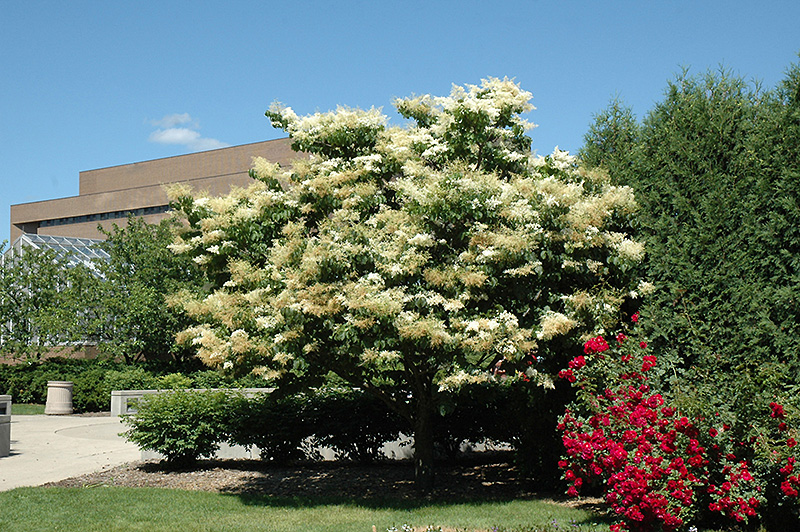Japanese Tree Lilac
The Japanese Tree Lilac is a handsome small specimen tree or large shrub that bears creamy white flowers in large panicles in June and July. Clumps will have three or more stems. 2002 Iowa Tree of the Year.
Easily grown in average, medium moisture, well-drained soil in full sun. Tolerates light shade, but best bloom occurs in full sun. Prefers organically rich, moist, slightly acidic soils with good drainage. Needs good air circulation. Tolerates urban conditions well. To the extent practicable, faded flower panicles should be removed prior to seed set. Prune as needed immediately after flowering. Best growth typically occurs in cool summer climates.
Syringa reticulata, commonly called Chinese tree lilac, typically grows as a small tree or large shrub. In tree form, it grows to 30’ tall and 20’ wide with an oval-rounded crown. Its best ornamental feature is its showy, fragrant, creamy white flowers which bloom in upright panicles to 12” long in late spring to early summer (later than most other lilac species). Some gardeners dislike the privet-like smell of the flowers. Flowers give way to loose clusters of brown capsules that persist into winter. Reddish-brown peeling bark is attractive on younger branches, gradually turning gray with age. Sharply-tipped, lanceolate to ovate, dark green leaves (to 6” long). No fall color.




